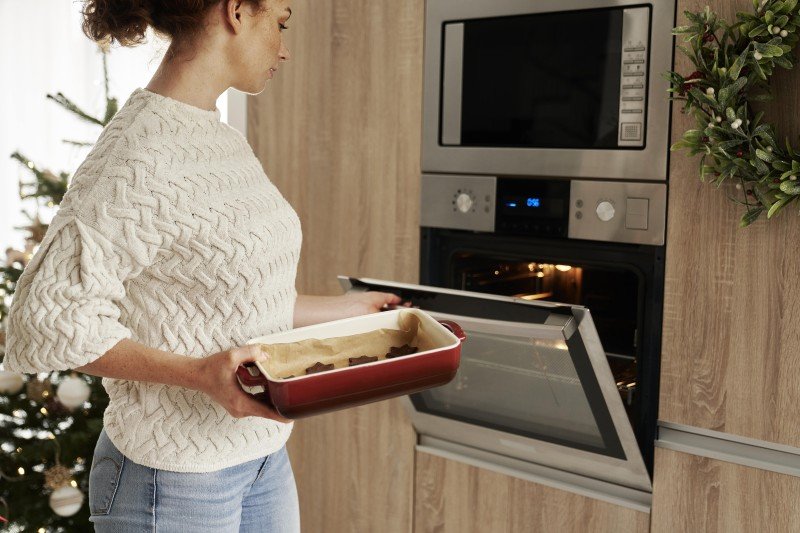The Three Greatest Moments In Oven Hobs History
The Essential Guide to Oven Hobs: Selecting the Right One for Your Kitchen
When it comes to home cooking, few devices are as vital as the oven hob. This versatile tool is important for a variety of cooking methods— boiling, frying, simmering, and sautéing. Given the myriad of alternatives available on the marketplace, picking the ideal oven hob for one's kitchen can be daunting. This article intends to supply a thorough take a look at oven hobs, discussing their types, functionalities, benefits, drawbacks, and key factors to consider when buying one.
Comprehending Oven Hobs
Oven hobs, commonly called cooktops, are flat cooking platforms that include burners or heating elements. They can be integrated with an oven or stand-alone. Buy Electric Oven Online of an oven hob can significantly impact cooking performance and convenience.
Types of Oven Hobs
Oven hobs are available in different types, each with distinct features. Below are the most common types readily available:
Type
Description
Advantages
Downsides
Gas Hobs
Uses gas or propane
Immediate heat and accurate temperature level control; works well with all cookware
Needs a gas connection; less energy-efficient than electric
Electric Hobs
Usage electric coils or convected heat
Easy to clean; consistent heat circulation
Slower to warm up; can be less responsive than gas
Induction Hobs
Uses magnetic fields to heat cookware directly
Quick cooking; energy-efficient; easy to tidy
Requires compatible pots and pans; generally more costly
Ceramic Hobs
Flat glass-ceramic surface with convected heat
Visually pleasing; simple to clean
Can be vulnerable to scratching; slower to heat than induction
Secret Features of Oven Hobs
When selecting an oven hob, several functions must be considered:
Size & & Configuration: Available in various sizes, oven hobs can accommodate multiple pots and pans. Standard options are usually 30, 36, or 48 inches broad.
Power Output: Look for hobs with differing power levels for different cooking processes. High-powered burners are outstanding for boiling, while lower-power ones can be used for simmering.
Control Types: Choose in between knob controls and touch controls. Knobs provide tactile feedback, while touch controls use smooth styles and additional performances.
Security Features: Options like automatic shut-off, child locks, and flame failure devices are vital for preventing accidents.
Reduce of Cleaning: Choose designs with smooth surface areas or detachable parts for simple upkeep.
Benefits and Disadvantages
Understanding the pros and cons of various oven hobs can help in making a notified choice.
Advantages
- Flexibility: Suitable for different cooking methods, from boiling to frying.
- Speed: Many hobs heat rapidly, especially induction models.
- Energy Efficiency: Some options, like induction hobs, can reduce energy consumption compared to traditional methods.
Downsides
- Expense: High-end designs, especially induction hobs, can be costly.
- Setup: Gas hobs need professional setup and a gas supply, which may incur additional costs.
- Compatibility: Not all cookware works on induction hobs, requiring additional purchases.
Buying Considerations
When choosing an oven hob, consider the following factors:
Cooking Style: Assess how frequently and what sort of cooking you do to identify the very best hob type.
Kitchen Layout: Measure your kitchen space to guarantee the hob fits and complements other home appliances.
Budget: Determine just how much you are ready to spend. Factor in setup and the cost of any essential pots and pans.
Energy Source: Evaluate the accessibility of natural gas or the electrical capacity of your kitchen to choose between gas and electric alternatives.
FAQs About Oven Hobs
Q1: What is the distinction between a cooktop and an oven hob?A cooktop and an oven hob typically refer to the very same appliance. However,“cooktop “is a wider term that includes both standalone hobs and integrated units with ovens. Q2: Can I use any cookware on an induction
hob?No, induction hobs require ferrous( magnetic)pots and pans
to work. Cookware made of product like stainless steel or cast iron is appropriate, while aluminum and copper without magnetic homes are not. Q3: How do I clean my oven hob properly?Cleaning approaches depend on the type of hob.
Typically, a moist cloth and moderate detergent work for glass-ceramic surface areas, while a particular hob cleaner is ideal for induction. Gas hobs need taking apart burners for thorough cleansing. Q4: Are induction hobs safe for cooking?Yes, induction hobs are generally safer than gas hobs as they do not produce an open flame,and the surface area cools off quickly. Many designs also include kid safety locks. Q5: How frequently ought to I change my oven hob?The lifespan of an oven hob differs based upon the type and use. Usually, they last around 10 to 15 years.****
Regular maintenance can help extend this duration. Picking the ideal oven hob for your home can considerably enhance your cooking experience. With a comprehensive understanding of the types, functions, advantages, and considerations, anybody can make an informed option. From the high heat of gas to the effectiveness of induction, there is a hob suited to every culinary requirement. Ultimately, the ideal oven hob can transform cooking from an ordinary task into an art form, making it possible for cooking enthusiasts to develop tasty meals with ease. 